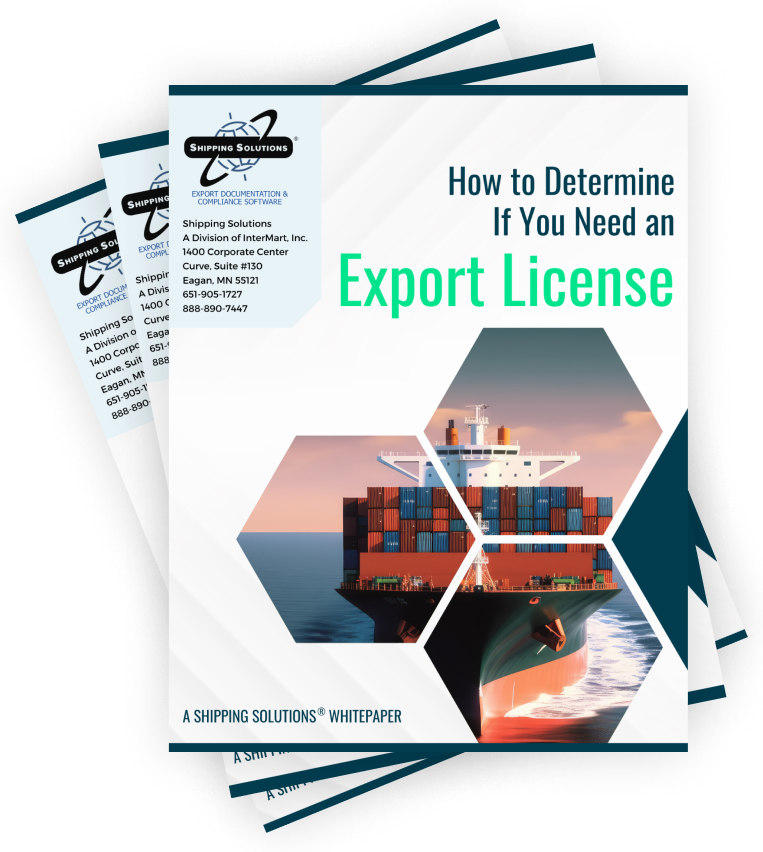The International Trade Blog Export Compliance
Shipments Occurring Wholly Outside the U.S. May Still Be Subject to U.S. Export Controls
On: July 5, 2023 | By:  Lindsay Bernsen Wardlaw |
5 min. read
Lindsay Bernsen Wardlaw |
5 min. read
 If you read Passages: The International Trade Blog regularly, you likely already know that items that are physically shipped from the United States are subject to U.S. export controls. But you may not be aware that some items that are manufactured entirely outside of the United States are also subject to U.S. export controls—even when they never pass through the United States.
If you read Passages: The International Trade Blog regularly, you likely already know that items that are physically shipped from the United States are subject to U.S. export controls. But you may not be aware that some items that are manufactured entirely outside of the United States are also subject to U.S. export controls—even when they never pass through the United States.
Situations when U.S. Export Controls Apply to Items Made Outside the United States
There are two primary reasons why this might be the case:
- The item contains enough U.S. origin content (hardware, software or technology, including design work and software that is bundled with the hardware) that cannot go to your destination country that the U.S. government applies extraterritorial controls to the end item. This is known as having more than a “de minimis” amount of controlled U.S. origin content, or exceeding the “de minimis threshold.” Situations where content may exceed the de minimis threshold include:
- When more than 25% of the item’s content is (1) U.S. origin content that (2) the U.S. government would restrict to the destination country.
- When more than 10% of the item’s content is (1) U.S. origin content that (2) the U.S. government would restrict to an embargoed country. (You can find a current list of embargoed countries here under Country Group E.) Generally all content that is sensitive enough to be directly enumerated on the U.S. Commerce Control List is controlled to embargoed countries, but less sensitive EAR99 content may not need to be included in this analysis.
- When the items contain any amount of highly controlled U.S. origin content, such as ITAR-controlled content, or content moved to the Commerce Control List from the U.S. Munitions List (USML) during export control reform.
You can read more about U.S. de minimis guidelines in this U.S. government summary document or directly in 15 C.F.R. 734.4 and Supplement No. 2 to Part 734.

- The item is made outside of the United States with certain U.S.-origin technology or software, or in a non-U.S. plant that uses equipment that was developed with certain U.S.-origin technology and software (even if the plant’s equipment wasn’t made in the United States!)—if it is shipping to a country, end-user, or end-use that subjects the item to one of the Export Administration Regulations’ Foreign Direct Product Rules.
The Foreign Direct Product Rules apply even when a product does not have enough U.S.-origin content to qualify for U.S. export controls under the de minimis rule—they even apply in situations where none of a product’s components are U.S. origin!
You should be aware that the U.S. government has increasingly seen its Foreign Direct Product Rules as a means to impose U.S. export controls on manufacturing chains that are largely outside of the United States but that rely heavily on U.S.-developed specialty tools or knowledge (like semiconductor manufacturing), and the use of these rules is likely to expand in the future.
At present, there are controls on the foreign direct product of U.S. technology or software in the following scenarios:- When exporting to certain actors that the U.S. government has designated as a threat to U.S. foreign policy and security interests; these actors are largely concentrated in China, Iran and Russia.
- When exporting certain items that are controlled for national security reasons or that are have highly sensitive classifications (such as 9x515 or a 600 series classification—reflecting items that were reclassified as dual-use from military-use during the U.S. export control reform process, but that are still considered high-risk).
- When exporting certain items that are directly or indirectly destined to certain advanced integrated circuit or semiconductor manufacturing applications or supercomputing end-uses in China.
- When exporting certain items to Iran.
You can see all current U.S. Foreign Direct Product Rules in 15 C.F.R. 734.9.
Don't be caught off guard when it comes to U.S. export controls! Though you may not be exporting a U.S.-made product or shipping from the United States, when your bill of materials has enough U.S. origin components or when you are making an item that relies heavily on U.S. assembly line or manufacturing expertise, you need to be ready to apply a U.S. classification to that item. Based on that classification, your product may require a U.S. export license or license exception to be exported from its country of manufacture to another country, end-user or end-use; re-exported from one subsequent country to another country, end-user or end-use; or transferred between end-users or end-uses within any country.
Stay ahead of the game by understanding the composition of your product, requesting the classifications of U.S. origin components, and considering the licensing requirements applicable to your product and its components based on your product's destination, end-use and end-user. With thoughtful processes, you can remain compliant with U.S. export regulations and avoid any potential penalties or legal issues.
Like what you read? Join thousands of exporters and importers who subscribe to Passages: The International Trade Blog. You'll get the latest news and tips for exporters and importers delivered right to your inbox.

About the Author: Lindsay Bernsen Wardlaw
Lindsay is an international trade attorney and former trade compliance manager with extensive experience developing export controls, sanctions, antiboycott and customs compliance programs, both in-house and for clients. She is currently an associate at Gibson, Dunn & Crutcher LLP. Formerly, she was the Vice President of Trade Advisory Services for Amalie Trade Compliance Consulting, a boutique consulting firm that focuses on practical and sustainable compliance solutions. Lindsay holds a B.A. in International Political Economy with a minor in Political Science. She has a J.D. from the University of Michigan School of Law. She is also a Licensed Customs Broker.
Lindsay’s blog posts are not legal advice.


